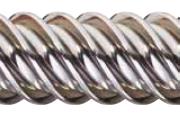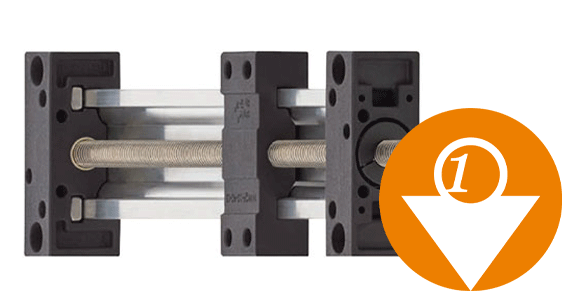Which linear axis drive is the right one for me?
Thomas Urbach | 15. July 2020
Lead screw drive or toothed belt drive?
Linear axes are an important element in automation and mechanical engineering, enabling the implementation of everything from simple adjustment tasks to complex, precise multi-axis systems. Linear axes and linear modules are driven in different ways.
The lead screw drive – for high accuracy
If less high speed but high accuracy is required, linear axes with trapezoidal thread are usually used. The linear axis with lead screw drive is also a good choice for high axial thrust forces. Due to the bending critical limit speeds of lead screws, the travel (max. 1,500mm), the speed and the speed of the lead screw are very limited. The recommended speed limit depends on the lead screw diameter.

High helix thread for medium speeds
With our dryspin high helix thread, accuracy and medium speeds can be combined due to the special thread pitch. A maximum travel of 1,000mm must be observed.

When do I decide on the lead screw drive?
- For use in format adjustment
- In extreme environments (heat, cold)
- When corrosion resistance is required
- When a quiet operation is required
- For shorter travels up to 1.5 metres
- For low to medium speed
- For high accuracy
Design of a lubrication-free linear axis with lead screw drive

- Lubrication-free due to polymer bearings and polymer nuts
- Shaft material (aluminium, steel or carbon)
- 8 trapezoidal thread pitches, 4 high helix thread pitches
- Body material made of stainless steel, aluminium, zinc or polymer
- Lead screw machined to drawing or plain drive shaft
- Accessories available
The toothed belt drive – when things have to go fast
Linear axes with toothed belt drive are particularly suitable for fast positioning and handling tasks. Long travels up to 3000mm and high speeds are the range for this linear drive.
When do I decide on the toothed belt drive?
- When high speeds are required
- For travels up to 3m
- If the structure should be very low profile
- If positioning accuracy must be >0.1mm
Design of a linear axis with toothed belt drive

- End supports with ball bearing
- Lubrication-free linear guide with polymer plain bearings
- Various carriage lengths
- Polyurethane (PU) or neoprene toothed belt
- Hard-anodised aluminium
Do you want to primarily reduce costs?
We will show you how you can save more than 30% costs with the drylin ECON series and at the same time improve the technology of your linear axes.


Do you have any questions?
Send us your contact request here
Our experts will help find a solution for you.

